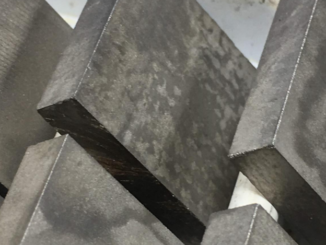A Column by Dr. Stan Trout
In recent weeks I had two very similar conversations that reminded me that we do not share the same collective wisdom or experience, and sometimes it is a very big deal.
As rare earth prices have increased, I receive the occasional inquiry about magnets. When people are a bit more frantic, they call me, even at odd hours for someone who works in the Mountain Time Zone. I get the sense that each caller feels he or she is facing a completely unique situation, when it is not. After reciting the details of how much the price of their magnet has increased recently and that they simply cannot afford to pay more for the magnet, they finally get around to asking me if I can sell them a magnet, preferably cheaper than their current supplier. (As of this writing, I can’t do that; but that may soon change.) Since I don’t have magnets to sell them, I try to offer some helpful advice. I start with a question, warning that it may prove embarrassing, albeit necessary. Is your design optimized?
After a long silence, they ask me what optimization means in this context. I describe finite element analysis and other similar tools available to examine many different combinations of materials and dimensions, without needing to build the actual device. These tools are a very efficient way to find not only the smallest magnet that will do the job, but also the cheapest magnet. It is this last phrase that finally catches their attention. “You mean I can save money if I optimize my design?” Yes, this is the essence of optimization. I can almost see the light bulb go on over their heads. (These days such light bulbs are CFL or LED, of course.) They are stunned to discover that such helpful tools exist and that using them saves money and perhaps their business. When I have been able to look at the particulars of a design or two, I find people using two or three times more magnet material than is really needed to do the job. This is an incredibly wasteful situation, especially with rare earth prices seemingly stuck in the stratosphere.
While I will fully admit that these are extreme cases of wasting magnets, I will also argue that these are not the only ones out there in urgent need of redesign. When magnet prices were low, it was pretty easy to just try something with little or no analysis. If it worked satisfactorily, there really wasn’t much reason to give it further thought.
These days, we should have ample motivation to look at designs very closely, using the aforementioned tools. It is simply good business to review all our designs in light of current material prices, not those that applied when the device was first conceived. It is important to be sure that there is no superfluous magnet material and that the best grade of magnet has been selected. And today, the best grade of NdFeB magnet is the one that has the lowest tolerable level of dysprosium, preferably none. The days of using too much Dy and staying in business are over.
So let me end with a question that could prove embarrassing, but necessary. Is your design optimized? To save our businesses, our valuable resources and our future, we all need to be able to answer yes.
 About the Author
About the Author
Dr. Stan Trout has more than 30 years experience in the permanent magnet and rare earth industries. Dr. Trout has a B.S. in Physics from Lafayette College and a Ph.D. in Metallurgy and Materials Science from the University of Pennsylvania. Stan is a contributing columnist for Magnetics Business and Technology magazine and the Director of the Magnet Business for Molycorp Minerals, LLC. Spontaneous Materials, his consultancy, specializes in technical training on magnetics. He can be reached at strout@ieee.org.
Published in the Winter 2011 Issue



